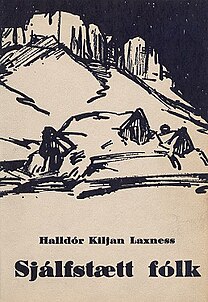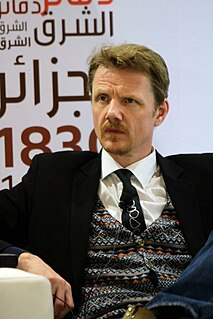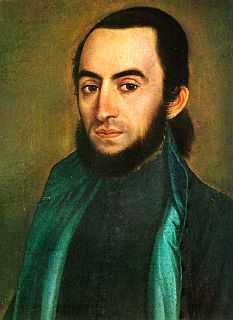Unnur Benediktsdóttir Bjarklind (1881–1946) who wrote as Hulda (the fairy or hidden one) [1] was an Icelandic poet and prose writer. A proponent of symbolism, she was the most prominent figure in a group of writers who revived and revitalized the þulur genre of oral litany. [1]

A symbol is a mark, sign or word that indicates, signifies, or is understood as representing an idea, object, or relationship. Symbols allow people to go beyond what is known or seen by creating linkages between otherwise very different concepts and experiences. All communication is achieved through the use of symbols. Symbols take the form of words, sounds, gestures, ideas or visual images and are used to convey other ideas and beliefs. For example, a red octagon may be a symbol for "STOP". On a map, a blue line might represent a river. Numerals are symbols for numbers. Alphabetic letters may be symbols for sounds. Personal names are symbols representing individuals. A red rose may symbolize love and compassion. The variable 'x', in a mathematical equation, may symbolize the position of a particle in space.
Having a librarian as a father Hulda received an extensive home education. She studied English, German and French as well as the Scandinavian languages, granting her access to the works of European writers. Among Icelandic poets she admired the rural poetry of Eggert Ólafsson and the lyrical quality of Benedikt Gröndal's works. [2] She began contributing poems to periodicals at the age of twenty and was quickly discovered by Einar Benediktsson and Þorsteinn Erlingsson, who hailed her as a star of neo-romanticism. [2] Her first volume of poetry, Kvæði (Poems; 1909) consists of lyrical nature poetry, contrasting the neo-romantic dream of freedom with the virtues of hard work [3] while some metaphors suggest the oppressed condition of women. [4] Despite delicate health and the duties of a housewife, Hulda was a prolific writer, publishing seven volumes of poetry, the last appearing posthumously in 1951. [5] One of her best known works is a patriotic poem written to celebrate the establishment of the Icelandic Republic in 1944. [5]

Eggert Ólafsson was an Icelandic explorer, writer and conservator of the Icelandic language. He also worked to revive the Icelandic culture and economy.

Einar Benediktsson, often referred to as Einar Ben, was an Icelandic poet and lawyer.
Þorsteinn Erlingsson (1858–1914) was an Icelandic poet. He graduated from Menntaskólinn í Reykjavík in 1883 and went to Copenhagen to study law. He never finished law school but during his time in Copenhagen his poems became known in Iceland. He returned to his home country in 1895 and died of pneumonia in Reykjavík in 1914.
Hulda wrote more than ten volumes of prose; fairy tales, short stories and sketches as well as the two-volume novel, Dalafólk (People of the Valleys). She wrote the novel as a reaction to Independent People by Halldór Laxness. In contrast to Laxness' bleak view of rural life in Iceland, Hulda presents a somewhat idealized picture of the old manorlike farmsteads. [5]

Independent People is an epic novel by Nobel laureate Halldór Laxness, originally published in two volumes in 1934 and 1935; literally the title means "Self-standing [i.e. self-reliant] folk". It deals with the struggle of poor Icelandic farmers in the early 20th century, only freed from debt bondage in the last generation, and surviving on isolated crofts in an inhospitable landscape.

Halldór Kiljan Laxness was an Icelandic writer. He won the 1955 Nobel Prize in Literature; he is the only Icelandic Nobel laureate. He wrote novels, poetry, newspaper articles, essays, plays, travelogues and short stories. Major influences included August Strindberg, Sigmund Freud, Knut Hamsun, Sinclair Lewis, Upton Sinclair, Bertolt Brecht and Ernest Hemingway.





